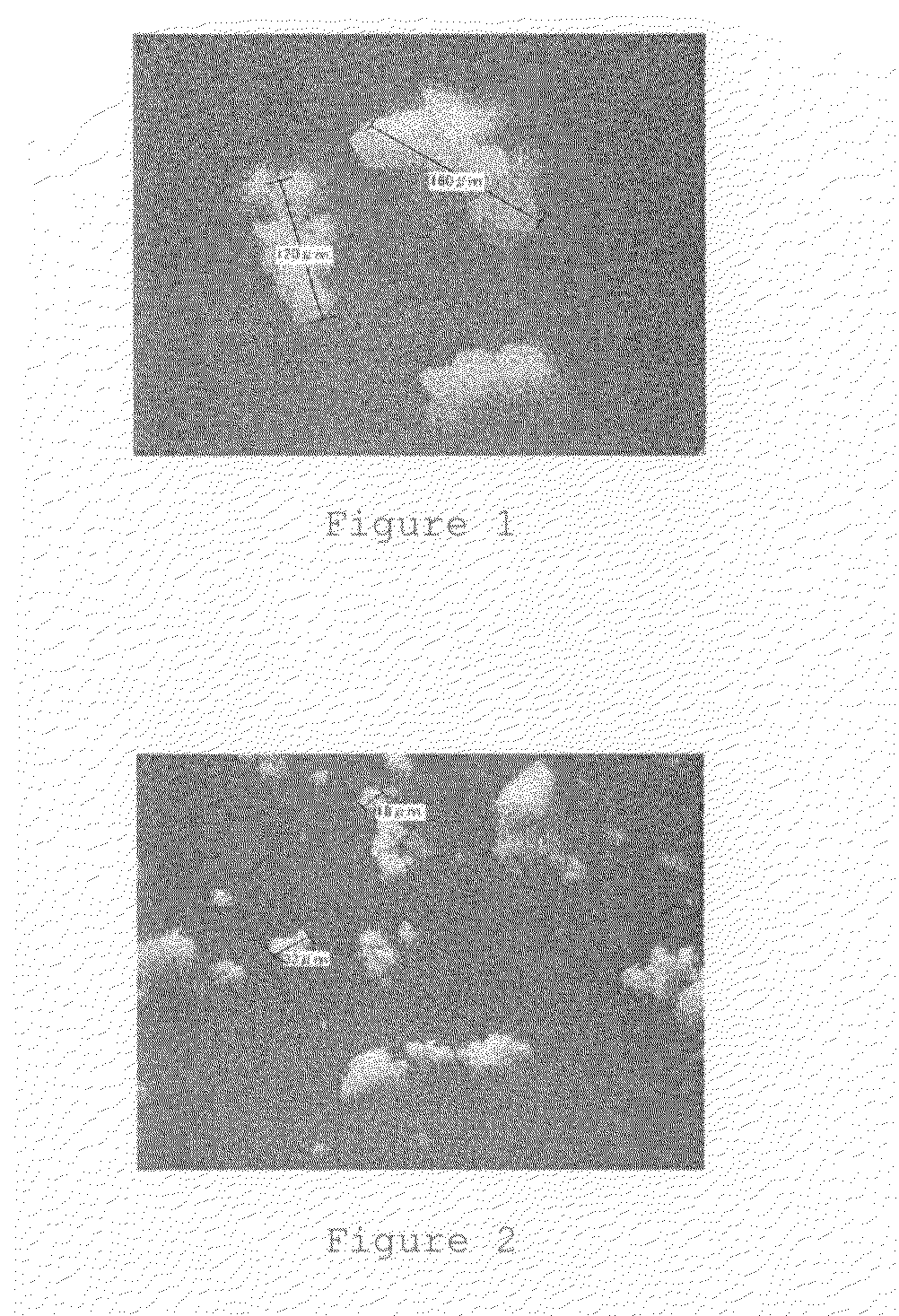Method of producing s-(-)-6-hydroxy-2,5,7,8-tetramethylchromane-2-carboxylic acid and product obtained by the method
a technology of tetramethylchromane and carboxylic acid, which is applied in the field of producing s()6hydroxy2, 5, 7, 8tetramethylchromane2carboxylic acid and product obtained by the method, and achieves the effect of providing crystals excellent solid-liquid separability and higher optical and chemical purity
- Summary
- Abstract
- Description
- Claims
- Application Information
AI Technical Summary
Benefits of technology
Problems solved by technology
Method used
Image
Examples
example 1
1) Production of methyl (±)-6-hydroxy-2,5,7,8-tetramethylchromane-2-carboxylate
[0030]In a 1 L stainless-steel autoclave, 100 g (0.657 mol) of 1,4-dihydroxy-2,3,5-trimethylbenzene, 110 g of an aqueous formalin solution (formaldehyde 37 wt %, water 56 wt %, and methanol 7 wt %), and 330 g (3.296 mol) of methyl methacrylate were placed. The mixture was allowed to react at 180° C. for 3 hours under stirring. After the mixture was cooled to 40° C., precipitated crystals were filtered, and rinsed twice with 200 g of methanol. The collected crystals were dried to obtain the aimed methyl 6-hydroxy-2,5,7,8-tetramethylchromane-2-carboxylate (hereinafter, referred to as CCM) in an amount of 135 g (0.478 mol as CCM, yield: 72.6%, chemical purity: 93.5%).
2) Production of (±)-6-hydroxy-2,5,7,8-tetramethylchromane-2-carboxylic acid
[0031]In a 200 mL glass vessel equipped with a condenser, 16.7 g (59.1 mmol as CCM, chemical purity: 93.5%) of CCM produced as above, 16.7 g of methanol, 3.3 g (82.5 mmo...
example 2
[0034]In a 3 L glass vessel equipped with a condenser, 418 g (1.58 mol) of S-CCM obtained as in Example 1, 417.5 g of methanol, 82.0 g (2.05 mol) of NaOH and 1250 g of water were placed, and the mixture was allowed to react under nitrogen atmosphere at 80° C. for an hour under stirring. Next, under a temperature condition of 80° C., an acidic solution of 292.5 g (2.15 mol) of potassium hydrogen sulfate in 1250 g of water was added thereto until the pH reached 5, and then insoluble matters were removed by filtration. Further, the filtrate was kept at 50° C., and the remaining acidic solution was added dropwise over an hour. After completion of the dropping, the stirring was stopped to precipitate crystals excellent in sedimentation separability. The crystals were filtered, and washed twice with 1250 mL of water. The resulting crystal slurry had a liquid content of 30 wt %, and was very good in both filterability and drying of crystals. After drying, 368 g (1.47 mol, yield: 93.0 mol %...
example 3
[0035]In a 3 L glass vessel equipped with a condenser, 418 g (1.58 mol) of S-CCM obtained as in Example 1, 417.5 g of methanol, 82.0 g (2.05 mol) of NaOH and 1250 g of water were placed, and the mixture was allowed to react under nitrogen atmosphere at 80° C. for an hour under stirring. Next, under a temperature condition of 80° C., an acidic solution of 292.5 g (2.15 mol) of potassium hydrogen sulfate in 1250 g of water was added thereto until the pH reached 5, and then insoluble matters were removed by filtration. Further, the filtrate was kept at 70° C., and the remaining acidic solution was added dropwise over an hour to cause precipitation by acid. After completion of the dropping, the stirring was stopped to precipitate crystals excellent in sedimentation separability. The crystals were filtered, and washed twice with 1250 mL of water. The resulting crystal slurry had a liquid content of 29 wt %, and was very good in both filterability and drying of crystals. After drying, 363...
PUM
| Property | Measurement | Unit |
|---|---|---|
| Temperature | aaaaa | aaaaa |
| Time | aaaaa | aaaaa |
| Temperature | aaaaa | aaaaa |
Abstract
Description
Claims
Application Information
 Login to View More
Login to View More - R&D
- Intellectual Property
- Life Sciences
- Materials
- Tech Scout
- Unparalleled Data Quality
- Higher Quality Content
- 60% Fewer Hallucinations
Browse by: Latest US Patents, China's latest patents, Technical Efficacy Thesaurus, Application Domain, Technology Topic, Popular Technical Reports.
© 2025 PatSnap. All rights reserved.Legal|Privacy policy|Modern Slavery Act Transparency Statement|Sitemap|About US| Contact US: help@patsnap.com



